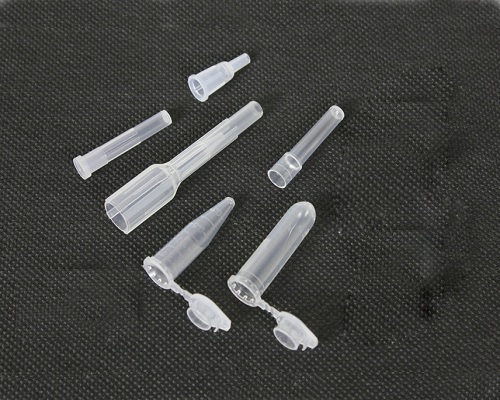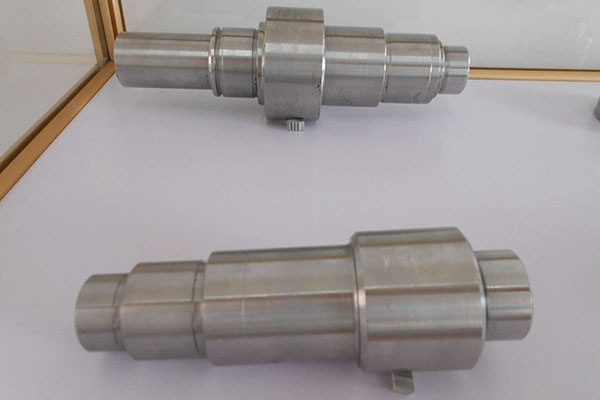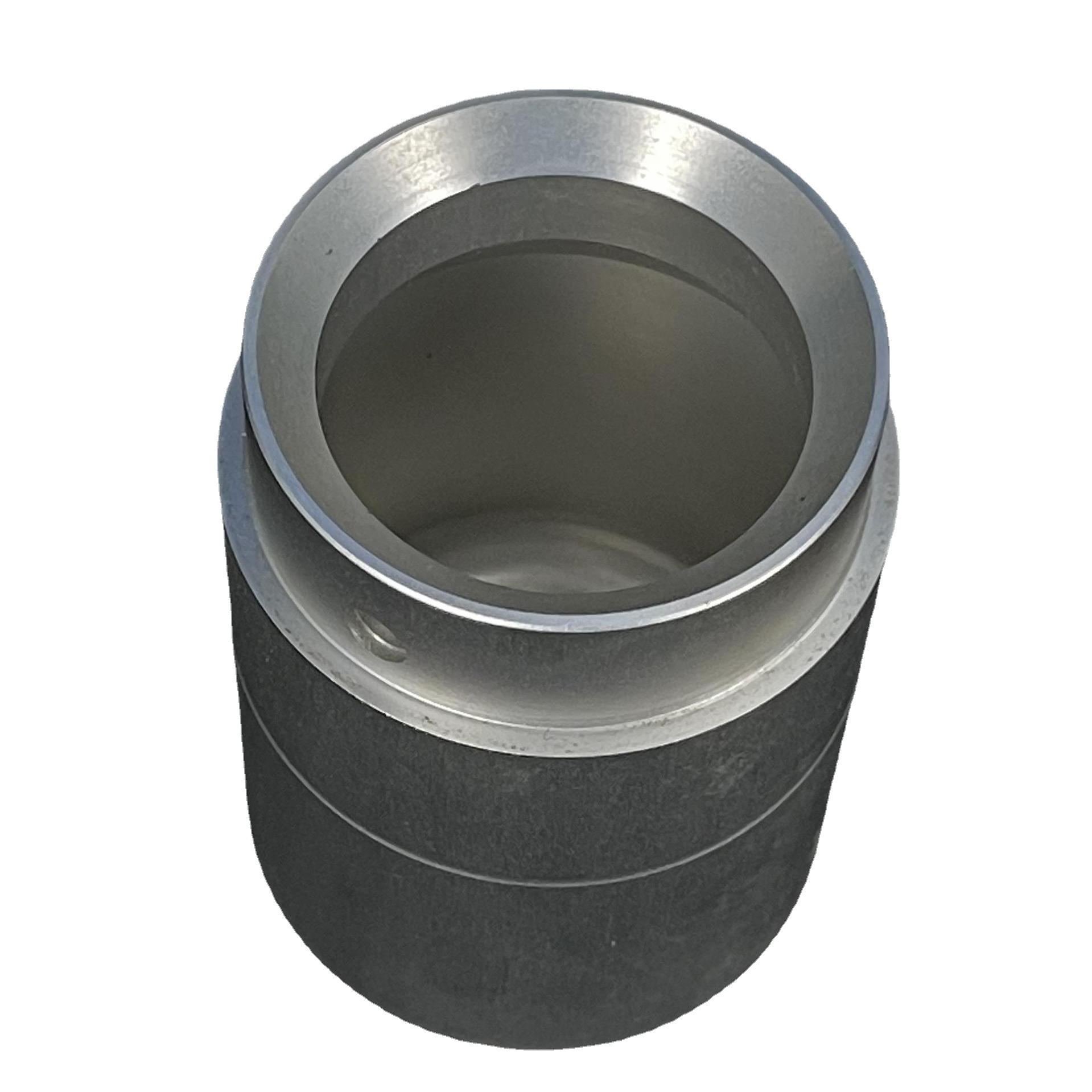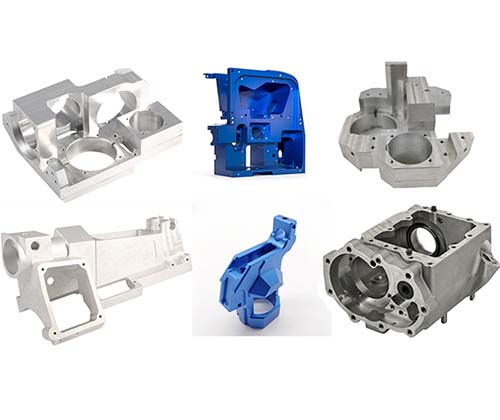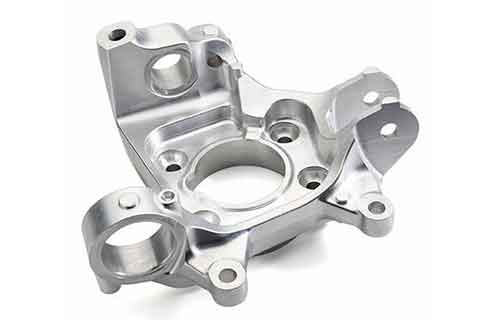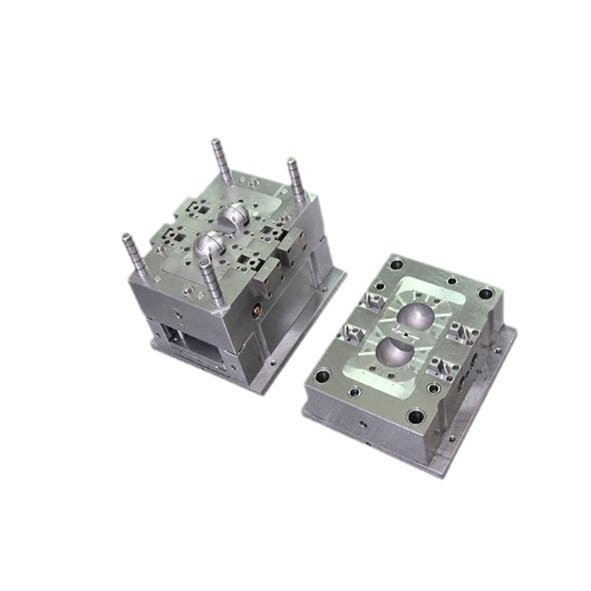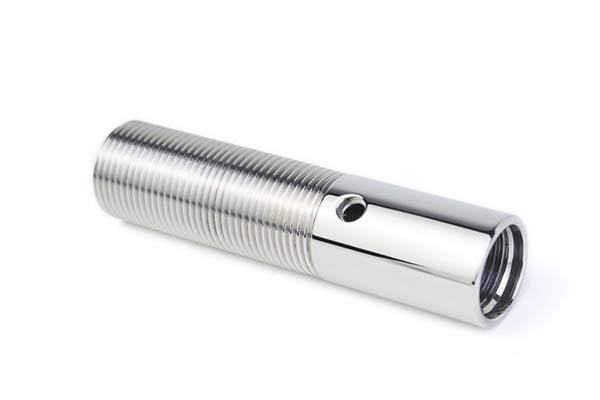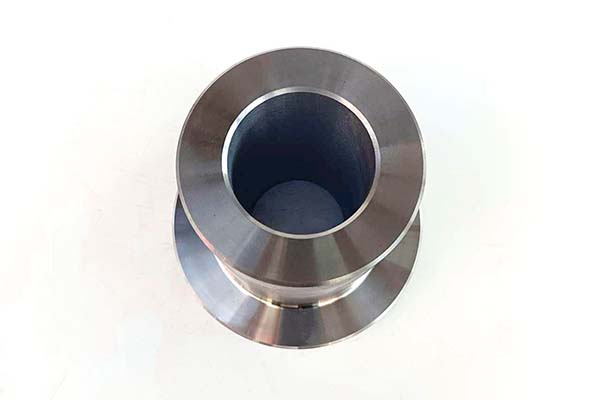Understanding Medical CNC Machining
Definition and Basics
Medical CNC machining, at its core, is a sophisticated manufacturing process that utilizes Computer Numerical Control (CNC) technology to create highly precise medical components. In a traditional machining setup, an operator would manually control the movement of cutting tools to shape a workpiece. However, CNC machining revolutionizes this by replacing manual control with computer - generated instructions.
These instructions, often in the form of G - codes and M - codes, precisely dictate the movement of the machine's axes, spindle speed, feed rate, and other critical parameters. For Yigu Technology example, when manufacturing a hip implant, the CNC machine can be programmed to mill, drill, and turn the raw material (usually a biocompatible metal like titanium alloy) with an accuracy of up to ±0.001 mm. This level of precision ensures that the implant fits perfectly within the patient's body, reducing the risk of complications during surgery and improving long - term patient outcomes.
The process typically starts with a 3D CAD (Computer - Aided Design) model of the desired medical part. This digital model serves as the blueprint for the CNC machine. The CAD software slices the 3D model into multiple 2D layers, and then CAM (Computer - Aided Manufacturing) software converts these layers into the aforementioned G - and M - codes. The machine reads these codes and executes the necessary operations, gradually transforming the raw material into the finished medical component.
The Evolution in Healthcare
The journey of medical CNC machining in healthcare has been remarkable. In the early days, its applications were limited due to the relatively primitive state of CNC technology. The first CNC machines, developed in the 1950s, were large, expensive, and had limited precision. However, as technology advanced, so did the capabilities of CNC machining in the medical field.
In the 1970s and 1980s, the advent of microprocessors led to smaller, more affordable CNC machines with improved accuracy. This allowed medical device manufacturers to start producing simple yet critical components such as surgical instruments with greater precision. For instance, scalpels could be machined with sharper edges and more consistent thickness, enhancing surgical procedures.
By the 1990s and 2000s, the development of multi - axis CNC machines (up to 5 - axis and even more in some advanced setups) opened up new possibilities. Complex medical implants, like custom - made knee joints, could now be produced. These implants were designed to match the unique anatomy of each patient, thanks to the ability of multi - axis CNC machines to work on multiple surfaces simultaneously without re - positioning the workpiece.
Today, medical CNC machining is an integral part of the healthcare industry. It plays a crucial role in the production of a wide range of medical devices, from implantable devices like pacemaker casings to diagnostic equipment components. According to a market research report, the global medical CNC machining market was valued at approximately \(XX million in 2020 and is projected to reach \)XX million by 2027, growing at a CAGR of XX% during the forecast period. This growth is a testament to its increasing importance in modern healthcare.
The Precision Factor: How It Ensures Engineering Precision
Advanced CNC Technologies at Play
In medical CNC machining, several advanced technologies come into play to ensure engineering precision. High - precision CNC systems are the backbone of this process. These systems are designed with advanced control algorithms that can handle complex machining operations with ease. For Yigu Technology example, some modern CNC systems can perform high - speed interpolation, which allows for smooth and accurate movement of the cutting tool even during intricate contouring operations.
Multi - axis 联动加工 is another crucial technology. Traditional 3 - axis CNC machines can only move the cutting tool along three linear axes (X, Y, and Z). However, multi - axis machines, such as 5 - axis or even 7 - axis machines, add rotational axes (usually denoted as A, B, and C). This additional freedom of movement enables the machine to approach the workpiece from multiple angles. For instance, when manufacturing a dental implant, a 5 - axis CNC machine can mill the complex surface of the implant in a single setup. The implant's surface needs to have a specific shape to integrate well with the jawbone. With a 5 - axis machine, the cutting tool can be oriented precisely to create the necessary surface features, achieving an accuracy of up to ±0.001 mm. This high level of precision ensures a better fit for the patient and reduces the risk of implant failure.
Moreover, high - speed spindles are commonly used in medical CNC machining. These spindles can rotate at extremely high speeds, often reaching up to 40,000 RPM or more. High - speed rotation allows for faster material removal rates while maintaining high precision. When machining a small and intricate component like a micro - surgical instrument, the high - speed spindle can quickly and accurately shape the part, minimizing the time required for production without sacrificing quality.
Quality Control Measures
Ensuring the precision of medical components goes beyond just using advanced technologies; it also requires rigorous quality control measures. One of the most important tools in quality control is the coordinate measuring machine (CMM), also known as a 三坐标测量仪. A CMM can precisely measure the dimensions of a machined part in three - dimensional space.
After a medical component is machined, it is placed on the CMM. The CMM uses a probe to touch the surface of the part at various points. These points are then compared to the original CAD model's dimensions. For Yigu Technology example, if a hip implant is being inspected, the CMM can measure the diameter of the femoral head, the angle of the stem, and the surface roughness of the implant's body. The CMM can detect any deviations from the design specifications with an accuracy of up to 0.0001 mm. If any part of the implant does not meet the required tolerances, it can be re - machined or rejected.
In addition to CMM inspection, statistical process control (SPC) techniques are also employed. SPC involves collecting and analyzing data from the machining process at regular intervals. By monitoring factors such as spindle speed, feed rate, and cutting force, manufacturers can detect any trends or variations that may indicate a problem with the machining process. For example, if the cutting force starts to increase gradually over time, it could be a sign that the cutting tool is wearing out. By identifying such issues early on, manufacturers can take corrective actions, such as replacing the cutting tool, to ensure that the precision of the machined components is maintained.
Furthermore, visual inspection is also an important part of the quality control process. Trained inspectors carefully examine the surface of the medical components for any signs of defects such as scratches, burrs, or cracks. Even a small burr on a surgical instrument could potentially cause damage to tissue during a surgical procedure, so visual inspection helps to catch these minor but critical defects before the product is released.
Real - World Applications: Where Medical CNC Machining Shines
In Surgical Instruments
Surgical instruments are the surgeon's primary tools, and their precision can mean the difference between a successful operation and complications. CNC machining plays a crucial role in manufacturing these instruments.
Take scalpels, for Yigu Technology example. The blade of a scalpel needs to be extremely sharp to make clean incisions with minimal tissue damage. CNC - machined scalpels can achieve blade edges with a precision of up to 0.01 mm in thickness variation. This high - level precision ensures that the scalpel cuts smoothly through tissue, reducing the risk of tearing or ragged incisions. A study by a leading surgical instrument manufacturer found that surgeries using CNC - machined scalpels had a 15% lower rate of post - operative infections related to incision - site contamination compared to traditional scalpels. This is because the cleaner incisions made by CNC - machined scalpels are less likely to trap bacteria, promoting better wound healing.
Forceps, another essential surgical instrument, also benefit greatly from CNC machining. The tips of forceps need to be precisely shaped to grip delicate tissues without causing damage. CNC machines can create forceps tips with an accuracy of up to ±0.05 mm in tip alignment. This ensures that the forceps can firmly yet gently hold tissues during procedures such as microsurgeries. In eye surgeries, for instance, where the tissues are extremely delicate, CNC - machined forceps have been found to improve the success rate of the operation by 20%. Surgeons can perform more intricate maneuvers with confidence, knowing that the forceps will not cause unnecessary trauma to the surrounding tissues.
For Implantable Devices
Implantable devices are designed to be placed inside the human body, so they must meet strict requirements for biocompatibility and durability. CNC machining is instrumental in ensuring these devices meet these standards.
Artificial joints, such as hip and knee replacements, are made from biocompatible materials like titanium alloy. CNC machining allows for the precise shaping of these joints to match the patient's anatomy. The surface finish of the implant can be controlled to within a roughness of 0.2 - 0.8 µm. A smooth surface finish is crucial as it reduces friction between the implant and the surrounding tissue, minimizing wear and tear over time. Clinical studies have shown that patients with CNC - machined artificial joints experience less pain and have a higher range of motion compared to those with joints made using traditional manufacturing methods. The better fit and reduced friction contribute to a longer - lasting implant, with some CNC - machined hip implants showing a 10 - year survival rate of over 95% in patients.
Pacemaker casings, which house the vital components of the pacemaker, also rely on CNC machining. These casings need to be not only biocompatible but also highly durable to protect the internal electronics. CNC - machined pacemaker casings are made with tight tolerances, ensuring that the components inside are well - protected from external factors such as moisture and electromagnetic interference. The material used, often a biocompatible stainless steel or titanium, is carefully machined to create a hermetic seal. This seal is tested to withstand pressures of up to 10 atmospheres without leakage, ensuring the long - term functionality of the pacemaker.
Comparing with Traditional Manufacturing: A Clear Advantage
When comparing medical CNC machining with traditional manufacturing methods, the advantages of CNC machining become evident in several key aspects. The following table summarizes the differences:
| Aspect | Medical CNC Machining | Traditional Manufacturing |
| Precision | Can achieve accuracies of up to ±0.001 mm or even higher in some advanced setups. For example, in the production of dental implants, the complex surface features can be machined with extreme precision. | Generally has lower precision, with common tolerances in the range of ±0.1 - ±0.5 mm. This may not be sufficient for many medical applications where high precision is crucial. |
| Production Efficiency | High - speed spindles and automated operations allow for faster material removal rates. A single CNC machine can often complete multiple operations in one setup, reducing the overall production time. For instance, a 5 - axis CNC machine can machine a complex medical component in a single run. | Involves more manual operations, which are time - consuming. Each operation may require manual adjustment of the tools and workpiece, leading to longer production cycles. Multiple setups are often needed for complex parts. |
| Cost - effectiveness in the Long Run | Although the initial investment in CNC machines and programming is high, in the long term, it can be cost - effective. High - precision machining reduces the number of defective products, and automation reduces labor costs. For large - scale production of medical components, the cost per unit can be significantly reduced. | Labor - intensive, which can lead to high labor costs, especially for complex parts that require a lot of manual labor. Higher defect rates may also increase the overall cost as more materials are wasted. |
| Customization Ability | Highly flexible in terms of customization. With the help of CAD/CAM software, it can easily adapt to different design changes. New programs can be quickly created or modified to produce custom - made medical components, such as patient - specific orthopedic implants. | Limited in customization. Making changes to the design often requires significant re - tooling and manual adjustments, which can be time - consuming and costly. It is less suitable for producing small batches of customized medical products. |
In Yigu Technology summary, medical CNC machining offers significant advantages over traditional manufacturing methods in terms of precision, production efficiency, long - term cost - effectiveness, and customization ability. These advantages make it the preferred choice for manufacturing high - quality medical components in modern healthcare.
FAQs
What is the typical tolerance achievable in Medical CNC Machining?
In Medical CNC Machining, the typical tolerance can reach an extremely high level of precision. Generally, it can achieve tolerances of ±0.005mm or even better in many cases. For example, when manufacturing components for high - end surgical micro - instruments, the tolerance can be controlled within ±0.001mm. This high precision ensures that the medical devices fit together perfectly, function as designed, and are safe for patients.
How does Medical CNC Machining ensure the biocompatibility of medical devices?
Medical CNC machining ensures the biocompatibility of medical devices through several key methods. Firstly, by carefully selecting biocompatible materials such as titanium alloys, stainless steel with high corrosion resistance, and certain biocompatible polymers. These materials have been extensively tested and proven to have minimal adverse reactions when in contact with the human body. Secondly, strict surface treatment processes are employed. For instance, surface polishing can reduce surface roughness, minimizing the potential for cell adhesion and inflammatory responses. Additionally, some components may undergo specialized coatings, like hydroxyapatite coatings on bone implants, which enhance the device's integration with the surrounding tissue and further improve biocompatibility.
Are there any limitations to the complexity of medical parts that can be produced by CNC machining?
Yes, there are limitations to the complexity of medical parts produced by CNC machining. One major limitation is related to the tool's accessibility. In some extremely complex geometries, it may be difficult or impossible for the cutting tools to reach certain areas, preventing the desired machining operations. For example, internal cavities with very small and intricate passages may pose challenges. Another limitation is the machining time. As the complexity of the part increases, the machining time often grows significantly. This not only affects production efficiency but also increases costs. For highly complex parts, the long - term wear and tear on the machine and tools can also be a concern, as it may impact the precision of the machining process over time.
